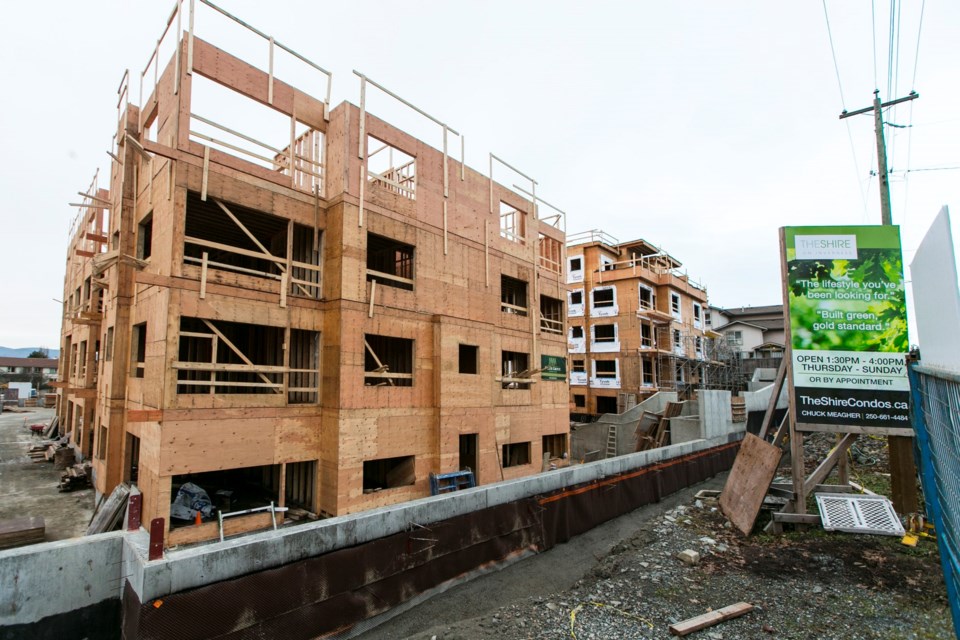Despite shedding nearly 6,000 jobs over the last 12 months, Victoria now has the lowest unemployment rate in the country, according to data released Friday by Statistics Canada.
The national agency’s monthly labour force survey showed Victoria’s unemployment rate was 3.1 per cent in April, while the total number of people employed in the region dropped to 189,400 from 195,200 a year ago.
Last month, the unemployment rate was three per cent, and a year ago it was 4.2 per cent.
Over the past 12 months Victoria’s trade sector lost 5,400 positions, the finance, insurance and real estate sector shed 4,200 positions and the information, culture and recreation sector reported 2,600 fewer positions.
Some of those job losses were offset by gains in the transportation and warehousing sector, which added 4,000 positions over the last year, the accommodation and food-services sector that added 2,100 jobs and the public administration sector that added 1,800 positions.
B.C.’s unemployment rate was unchanged in April at 4.6 per cent compared with March, but was improved over the 4.8 per cent in April last year.
Bruce Ralston, provincial Minister of Jobs, Trade and Technology, heralded the numbers as proof B.C. has the country’s best performing economy.
“For 21 months in a row, B.C. has held the lowest rate of unemployment in Canada,” he said. “We saw part-time employment replaced by significant increases in full-time jobs. Overall, B.C. created 5,900 jobs with gains coming in construction and business administration. That brings us to 82,000 jobs created in B.C. over the past year, with massive gains in the private sector.”
Nationally, the numbers were a bit of a surprise, as the country saw its biggest one-month employment gain since the government started collecting comparable data in 1976.
The country added 106,500 net jobs in April, the bulk of which were full time, according to Statistics Canada.
The rush of new jobs far surpassed market forecasts and helped drop the unemployment rate to 5.7 per cent, down from 5.8 per cent in March.
“Wow. This was by and large a solid report. Nearly every indicator of quality came in strong this month,” TD senior economist Brian DePratto wrote in a research note. “Chalk this one up as a solid message that employers still have faith in the Canadian economy.”
The overall gain was driven by the creation of 73,000 full-time jobs and 83,800 positions in the private sector. The gains were spread across many industries, with both the services and factory sectors seeing gains. Employment rose by 32,400 in wholesale and retail trade positions, while the construction sector added 29,200 jobs.
A rush of 66,400 part-time positions for workers aged 15 to 24 years old helped lower the youth unemployment rate last month to 10.3 per cent, down from 10.7 per cent, the survey said.
Robert Kavcic, senior economist at BMO Capital Markets, said that overall the strong numbers suggest the economy has been rebuilding momentum in the second quarter following a sharp winter slowdown.
The Bank of Canada has blamed the deceleration on temporary factors and is predicting the economy to pick up its pace as 2019 progresses.
— With files from The Canadian Press
Jobs by the numbers
CANADA
April employment (numbers from the previous month in parentheses):
Unemployment rate: 5.7% (5.8)
Employment rate: 62.1% (61.9)
Participation rate: 65.9% (65.7)
Number unemployed: 1,158,700 (1,157,200)
Number working: 19,029,100 (18,922,600)
Youth (15-24) unemployment rate: 10.3% (10.7)
Men (25+) unemployment rate: 5.2% (5.2)
Women (25+) unemployment rate: 4.7% (4.7)
PROVINCES
Newfoundland-Labrador — 11.7 (11.5)
Prince Edward Island — 8.6 (8.9)
Nova Scotia — 6.9 (6.2)
New Brunswick — 8.0 (7.9)
Quebec — 4.9 (5.2)
Ontario — 6.0 (5.9)
Manitoba — 5.2 (5.0)
Saskatchewan — 5.4 (4.9)
Alberta — 6.7 (6.9)
British Columbia — 4.6 (4.7)
CITIES
St. John’s, N.L. — 7.9 (7.8)
Halifax — 5.1 (4.9)
Moncton, N.B. — 5.9 (5.8)
Saint John, N.B. — 5.9 (5.6)
Saguenay, Que. — 4.7 (4.8)
Quebec — 3.3 (3.6)
Sherbrooke, Que. — 3.4 (3.8)
Trois-Rivieres, Que. — 5.5 (5.4)
Montreal — 5.4 (5.7)
Gatineau, Que. — 5.6 (5.5)
Ottawa — 5.5 (4.9)
Kingston, Ont. — 4.6 (4.8)
Peterborough, Ont. — 6.0 (6.7)
Oshawa, Ont. — 4.8 (5.0)
Toronto — 6.6 (6.6)
Hamilton, Ont. — 3.9 (3.5)
St. Catharines-Niagara, Ont. — 6.5 (6.6)
Kitchener-Waterloo, Ont. — 4.9 (4.7)
Brantford, Ont. — 5.0 (4.7)
Guelph, Ont. — 4.0 (2.2)
London, Ont. — 4.8 (5.0)
Windsor, Ont. — 5.6 (5.5)
Barrie, Ont. — 7.0 (6.3)
Sudbury, Ont. — 5.4 (5.9)
Thunder Bay, Ont. — 6.0 (6.3)
Winnipeg — 5.2 (5.4)
Regina — 4.5 (4.6)
Saskatoon — 6.1 (6.1)
Calgary — 7.6 (7.7)
Edmonton — 6.9 (7.1)
Kelowna — 4.4 (3.9)
Abbotsford-Mission — 5.5 (5.4)
Vancouver — 4.4 (4.8)
Victoria — 3.1 (3.0)



